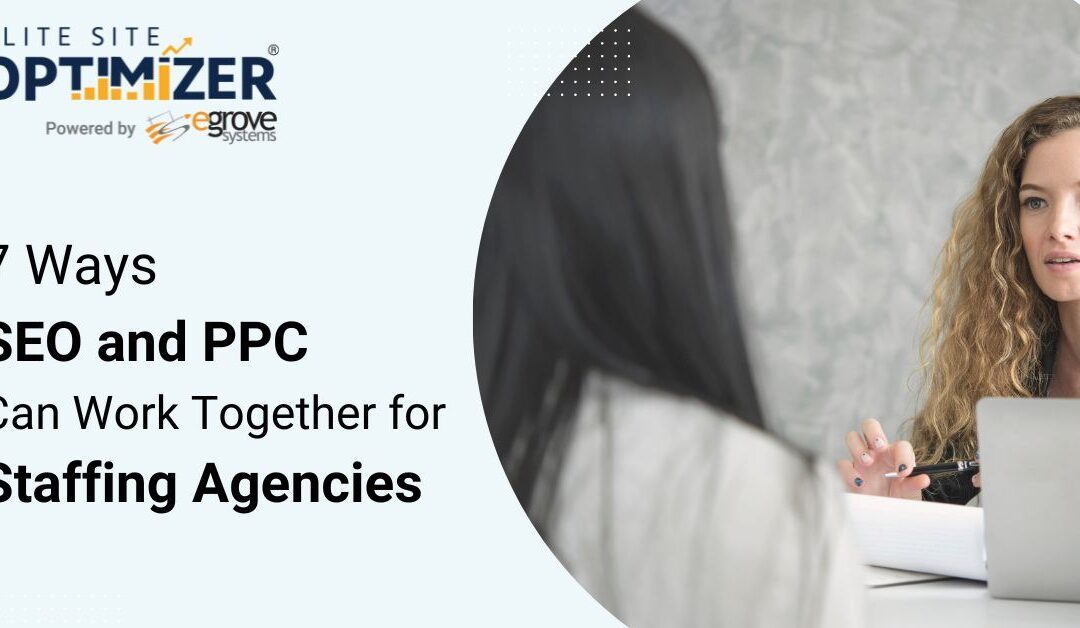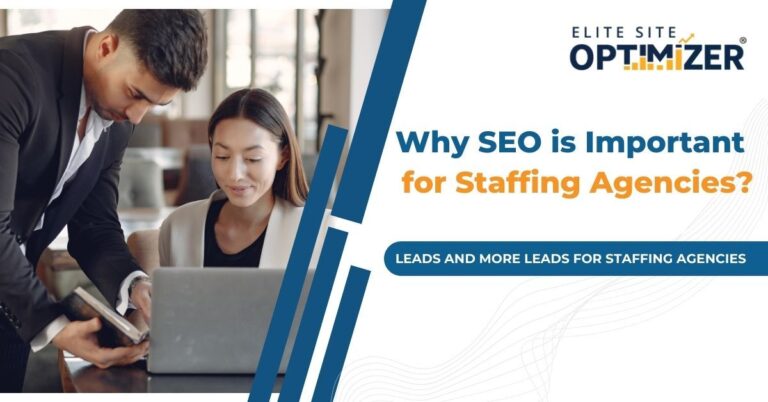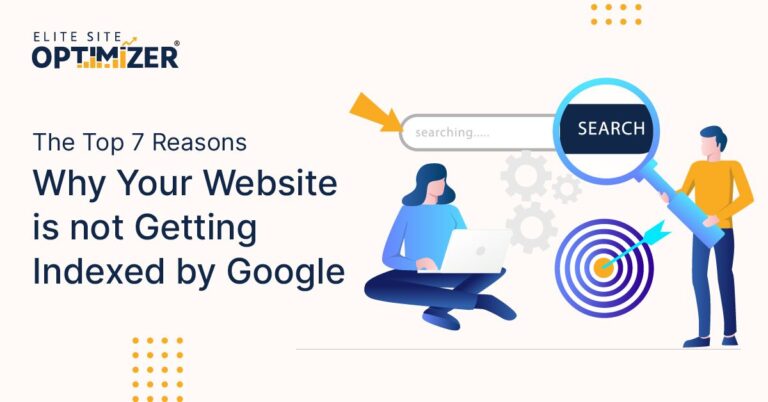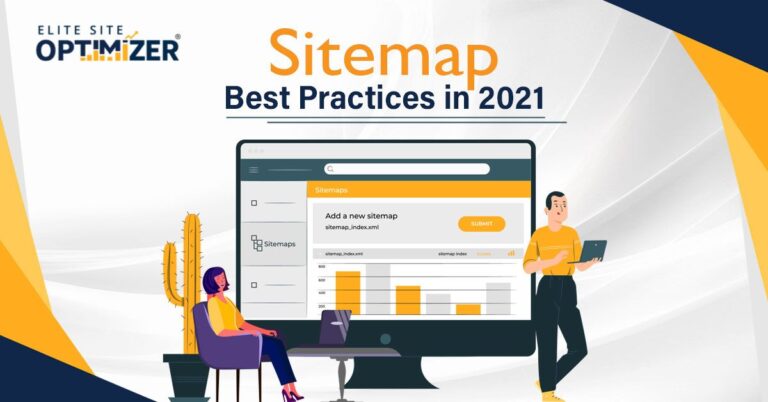Every business owner invests in digital marketing to ensure their worldwide presence in today’s digitally focused climate.
When starting a staffing company, you need to use every tool in your toolkit to draw in new clients and job seekers. Pay-per-click (PPC) advertising and Search engine optimization (SEO) are two crucial strategies that can help you stand out from the competition, raise brand recognition, and encourage conversions among your target market.
What is SEO?
SEO aims to improve your website’s and content’s position on Google and other search engines. Although an SEO marketing plan combines several strategies, producing excellent content (and optimizing it) is perhaps the most crucial element.
Search Engine Optimization involves three sets of tactics:
Technical SEO: Technical SEO is the process of optimizing your website and server to increase the efficiency of search engine spiders crawling and indexing your page (improve your organic ranking).
On-page SEO: On-page SEO, sometimes called on-site SEO, is the process of optimizing individual web pages to raise a website’s position in the search results and increase organic traffic. On-page SEO comprises optimizing headlines, HTML elements (title, meta, and header), pictures, and posting pertinent and high-quality content.
Ongoing SEO: Ongoing SEO doesn’t just begin the procedure of finding a website online; it also enables websites to modify over time to accommodate new SEO best practices, algorithmic modifications, and audience preferences. Ongoing SEO comprehensively attains long-term website goals.
What is PPC?
In internet advertising, pay-per-click (PPC) has several different definitions. It is essentially an internet advertisement. However, you only get paid when someone clicks on it, and the provider receives a tiny commission from each click. This is also how the name “pay-per-click” was born.
PPC uses targeting techniques to display advertisements where internet users are looking for jobs and consumers are looking for products and services. Search engines, social media, and even conventional websites that are a part of the Google advertising network fall under this category.
SEO and PPC, when used synonymously, can increase website traffic and help businesses rank high. People often claim that SEO is not a waste of money since they haven’t used PPC services.
Google SEO results are used to generate clicks and traffic for both sponsored and organic searches. This is accurate, given that the PPC campaign and SEO efforts work together to promote success.
Exploring strategies
If SEO is about visibility and site authority, PPC or Pay-Per-Click is targeted advertising on search engines. Typically SEO and PPC are handled independently, so teams also exist in silos. But in combination, these two strategies can beget better business results and SERP outcomes. While standalone tactics may be good – there is a visual difference when you amalgamate the two:
You will notice that both of them have similar goals and rely on one another in many ways. Vital information is passed on so that both these strategies improve each other’s performances. Surprisingly, these two strategies are not meant to be siloed, and their alignment is often ignored. But bring the two together, and you can reap magical benefits.
Here are 7 smart strategies of PPC and SEO combined. The increase in website traffic is a shared objective for both.
1. Using keywords as research:
The prevalent perception that PPC and organic search can coexist depends more on keyword research than the other things.
You must first get an understanding of keyword searches and pertinent subjects that are a good fit for what your audience is trying to find. The information you provide should be enjoyable for viewers and aid in their immersion in your website.
Additionally, you may obtain keyword research data using cutting-edge digital techniques. You don’t have to separate the data for SEO efforts and sponsored click marketing.
Processes may be accelerated by utilizing numerous tools and attitudes. Discover information and concepts that could be useless and have not yet been found.
2. Pay-Per-Click advertisements and SEO Meta Descriptions:
Similar to SEO requests, paid request text advertisements are arranged by SERP. This entails immediately selecting the PPC advertisements with the best active CTR and quality ratings and connecting them to SEO Meta tags and Meta descriptions. It is also true that the opposing action is quite powerful. To learn about keyword utilization and content for PPC advertising, use SEO Meta descriptions and titles with the greatest CTR.
Read also:-Why SEO is Important for Staffing Agencies?
3. Keyword Effectiveness:
Having trustworthy data that can be tracked and helps distinguish between zones that are used and ones that are not is the greatest alternative to the ideal practice. If the SEO specialist can obtain search term performance statistics from Google Ads and the PPC specialist can obtain the execution data from Search Console, a lot of testing and mistakes may be avoided. You may get some incredible direction by using internet tools for keyword research, but actual tracking is far superior. Regularity, changes to the SERPs, and competition comparisons between sponsored and organic inquiries are all important considerations.
4. Data on the competition:
In this competitive environment, competitors cannot be disregarded. They play a crucial role in how ads are shown, how they rank, and how much it costs to invest in sponsored and organic searches. Google SEO benefits from knowing who is in control of SERPs and who is spending more on ad placements. It also performs admirably with sponsored advertisements. Competitors in SEO are different from those in PPC advertising. Additionally, as algorithms change and time passes, the SEO approach may shift, affecting competition. On the other hand, gathering competitive information for both paid and organic searches will help you define your ideal ranking and bidding strategy.
Without a doubt, you may employ paid advertising as well as SEO to target your rivals. How to start something that your audience will cheer for? How much thought do you put into your search? What kinds of search terms are you aiming for that could rank higher?
5. Sectors with Remarketing Potential:
Examining retention, traffic, and vacation statistics will reveal a plethora of information. For interactions across search channels, it is crucial to have a basic understanding of how your clients are using your website. You may also tailor from data on SEO traffic, much like insights from sponsored searches.
Paid tracking may be used to further engage users in the customer journey and pipeline for content and phrases connected to the top of the funnel that is bringing in traffic from SEO searches. Remarketing is one method that may be used for main page views.
6. Test new SEO keywords:
PPC is a quick tactic. Once you’ve set up your campaign and decided on your budget, you can start ranking. But how do you choose the terms you want to include in your text? Test your keywords for maximum search volume, CTR, and conversion rate with Instant PPC Promotion. New keywords found through his successful PPC ads will improve the performance of your SEO keywords and their text.
7. Identify ignored search engine clicks:
In a research conducted by Google Research, it was discovered that when search advertisements for a term were halted, almost 89% of the traffic those ads had previously brought in was not replaced by organic ranks. So, even if your website is ranked number one, suspending PPC advertisements might actually reduce traffic to your site.
PPC may assist you in gaining clicks and interest from searchers that you might otherwise lose. Even if you’re not naturally at the top, PPC may still help you draw in customers who are looking for your goods or services, frequently at very little expense.
8. Not including descriptions
Job seekers can comprehend job postings only when you include complete descriptions. Posting pages can be improved with a few changes to the ‘description’ field. Text present in the description property is displayed only when fully placed in the job posting. Therefore, it is imperative to produce all information including benefits, skills, etc., in the ‘description’ field. Review the field before you publish the posting to ensure that users can view the job description and all the information duly included in the ‘qualifications’ property, as well.
Conclusion:
Indeed PPC advertising and SEO work together. For them to cooperate, data exchange and insight creation are both necessary. Use Search Engine Optimization and Pay-Per-Click Ads, two effective digital marketing services, to increase the return on your investment for your company.







